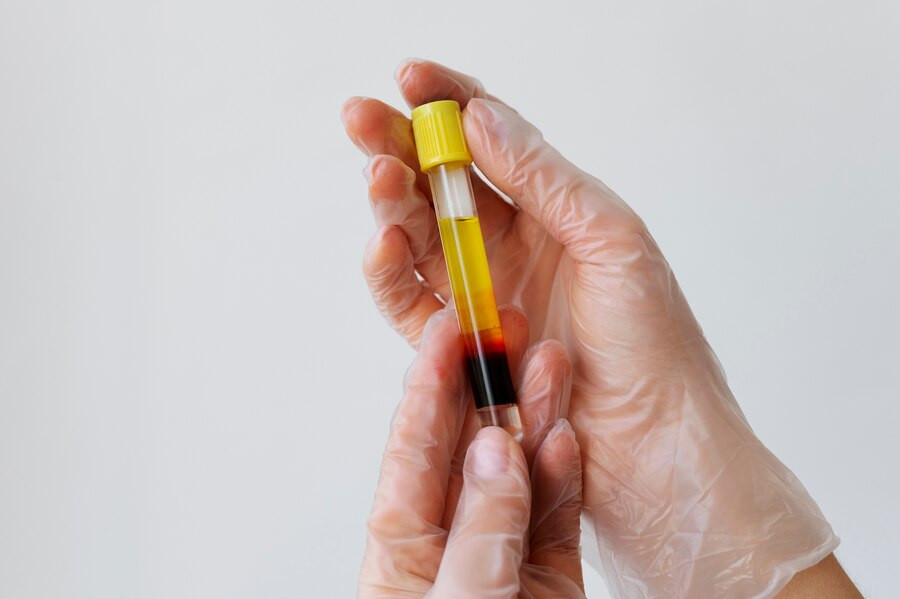Vitamin D3, also known as cholecalciferol, is a type of vitamin D that is very important for human health, much like other forms of vitamin D. It can be synthesized naturally by the human body through sunlight exposure, is also present in specific foods like salmon, mackerel, tuna, egg yolk, and liver, and can be obtained through supplements.
Benefits of consuming vitamin D3
Vitamin D3 is typically available in tablet or liquid form and is recommended to be taken after meals for optimal absorption. In addition to addressing vitamin D deficiency, the consumption of vitamin D3 offers several other advantages, such as:
Aids in reducing blood pressure levels in individuals diagnosed with hypertension
Studies indicate that individuals with insufficient vitamin D levels are at an increased risk of developing hypertension and type 2 diabetes. Vitamin D, including its form D3, plays a role in regulating renin, an enzyme critical for blood pressure regulation.
Supplementing with vitamin D3 may offer advantages by reducing systolic blood pressure, particularly among specific demographics such as individuals aged 50 and those with obesity.
Prevent osteoporosis
Osteoporosis is characterized by decreased bone density and quality which can increase the risk of fractures. Vitamin D deficiency also leads to inadequate calcium absorption, making it easier to lose bone density and increase the risk of osteoporosis.
Research shows supplementing with vitamin D3 in older people can help reduce the risk of hip fractures and increase bone mass density in the femoral bone.
Build and maintain strong bone
Vitamin D collaborates with calcium and phosphorus to build and sustain bone strength, ensuring the durability of bones.
Treat certain health condition
Vitamin D is utilized in the treatment of specific health conditions like hypoparathyroidism, pseudohypoparathyroidism, familial hypophosphatemia, and kidney disease. Its role is to maintain normal calcium levels and promote healthy bone growth.
Read more: Vitamin D And Vitamin D3, What's The Difference?
The source of vitamin D3
Vitamin D3 is present in numerous animal-derived food sources, which include:
- Fatty fish like salmon, mackerel, sardines, and tuna
- Fish oil
- Eggs, particularly the yolks
- Beef liver
- Dairy products fortified with Vitamin D3
- Vitamin D3 supplements
- Processed foods such as cereals, packaged orange juice, and margarine that are enriched with Vitamin D3
Besides dietary intake, exposure to sunlight is another natural method for the body to synthesize vitamin D3. Direct sunlight exposure stimulates the body's production of this vitamin.
Read more: Benefits Of Vitamin D Level Tests In The Body
Vitamin D3 recommended dosage
The recommended dosage of vitamin D3 varies for each individual based on factors such as age, health status, sun exposure, and specific body needs. As per the daily dose guidelines for vitamin D3, the recommended intake according to age groups is as follows:
- Age 0-12 months: 400 IU (10 mcg)
- Age 1-18 years: 600 IU (15 mcg)
- Age 19–70 years: 600 IU (15 mcg)
- 71 years of age or older: 800 IU (20 mcg)
- Pregnant and lactating mothers: 600 IU (15 mcg)
It's important to avoid excessive intake of vitamin D3, as it can lead to overdose symptoms such as seizures, confusion, and irregular heartbeat.
Consuming excessive amounts of vitamin D3 is advised against due to the potential risk of overdose symptoms such as seizures, confusion, and irregular heartbeat.
To determine if you require D3 supplements, it is advisable to consult a healthcare professional and undergo testing. Additionally, it is important to recognize the signs of vitamin D deficiency, which include fatigue, muscle aches, weakness, bone pain, and mood fluctuations.
If you need medical advice or consultation, you can either visit a doctor or make use of the consultation features that are available in the Ai Care application by downloading the Ai Care application from the App Store or Play Store.
Looking for more information about nutrition, food and other diet tips? Click here!
- dr. Monica Salim
Yvelette Stines (2023). The Health Benefits of Vitamin D3. Available from: https://www.verywellhealth.com/vitamin-d3-5082500
WebMD. Vitamin D3: Uses, Side Effects, and More. Available from: https://www.webmd.com/drugs/2/drug-10175/vitamin-d3-oral/details
Lindsay Curtis (2023). Vitamin D vs. D3: What’s the Difference?. Available from: https://www.verywellhealth.com/vitamin-d-vs-d3-7153133
Fouad Chebib, M.D. (2023). Can vitamin D deficiency cause high blood pressure?. Available from: https://www.mayoclinic.org/diseases-conditions/high-blood-pressure/expert-answers/vitamin-d-deficiency/faq-20058280
Cleveland Clinic (2022). Vitamin D Deficiency. Available from: https://my.clevelandclinic.org/health/diseases/15050-vitamin-d-vitamin-d-deficiency
Adam Rowden (2023). What are the benefits of vitamin D for osteoporosis?. Available from: https://www.medicalnewstoday.com/articles/vitamin-d-osteoporosis
Harvard Medical School (2022). Taking too much vitamin D can cloud its benefits and create health risks. Available from: https://www.health.harvard.edu/staying-healthy/taking-too-much-vitamin-d-can-cloud-its-benefits-and-create-health-risks











